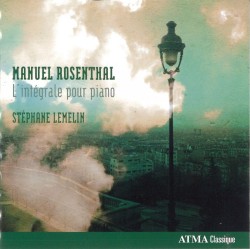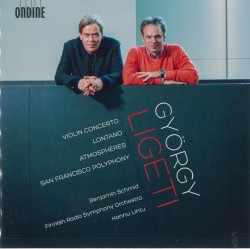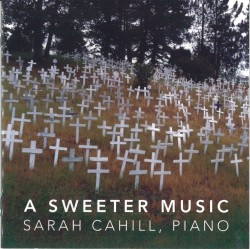Jörg Widmann – Violin Concerto; Antiphon; Insel der Sirenen
Jörg Widmann – Violin Concerto; Antiphon; Insel der Sirenen
Christian Tetzlaff; Swedish RSO; Daniel Harding
Ondine ODE 1215-2
Orchestral works by contemporary German composer Jörg Widmann (b. 1973) receive fine readings here. Widmann is a virtuoso clarinetist who understands the orchestra’s newer sonic resources and has a performer’s sense of the dramatic. The title of Christoph Schlüren’s liner notes, Hedonism of Danger, indicates another aspect of this composer’s voice.
The one-movement Violin Concerto (2007) has roots from the later 20th century German neo-Expressionists back to Alban Berg. Overall the work is the antithesis of “cool” – the violin writing is intense with broad lyrical gestures and sharp contrasts. Tetzlaff’s tone is rich in the lower registers; harmonics are ethereal and intonation reliable. Harding’s orchestra stays sonorous in extreme registers, never submerging the soloist’s voice in its natural soundscape.
I particularly like Insel der Sirenen (Island of the Sirens) of 1997 for violin and 19 strings. It re-imagines the episode in Homer’s Odyssey as experienced on a rickety boat in the harsh seascape, with periodic squeaks, honks and rustling over tremolando waves. The solo violin “siren’s” vibrato is wide and glissandi wider; other sirens are high-pitched and the atmosphere is menacing.
Antiphon (2007-08) for full orchestra is the most hard-edged and dissonant work. Abrupt, aggressive gestures such as sharp attacks and crescendi suggest a post-industrial world where things are battered and torn at. In both this and the preceding work, innovations of Schafer, Penderecki and Ligeti are excitingly transformed by and for a new generation in a new millennium.
Concert Note: Widmann is featured as composer, conductor and clarinetist when New Music Concerts presents ”A Portrait of Jörg Widmann” on April 18 at the Betty Oliphant Theatre.







